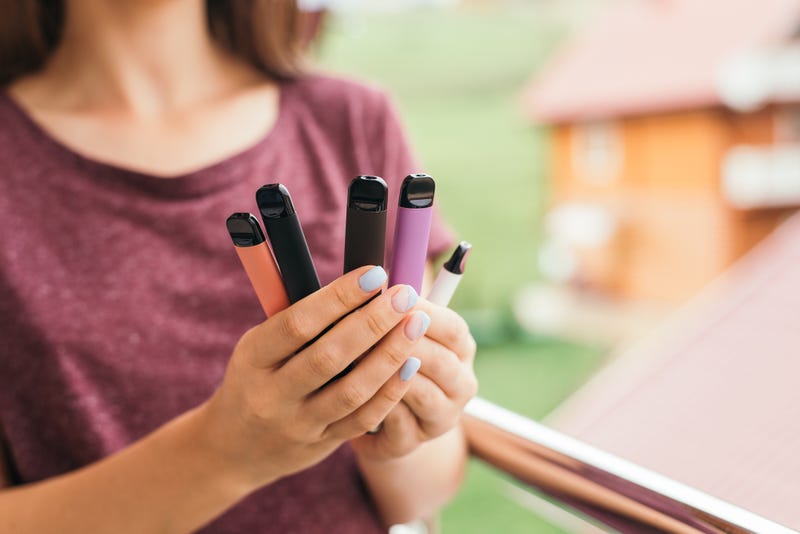
In a May 2024 episode of his teen mental health podcast, “It’s Not Your Fault,” host Brandon Jones spoke to a Minnesota teen who is on the front lines of fighting for legislation to prevent tobacco companies from marketing their products to young people.
The episode covers how teens continue to be deceived by flavored tobacco, using it to cope with academic stress, anxiety and social media pressures. High school and middle school children are experimenting with vapes and other flavored tobacco products because “it’s fruity, it’s fun and it’s become part of mainstream culture,” says Jones.
Many kids don’t realize they are being exposed to nicotine and other harmful chemicals while using it for stressors in their lives. Research shows that a majority of the 70% of youth using flavored e-cigarettes show signs of nicotine dependence, which means it's hard to kick the habit once they get started.
Youth encounter flavored tobacco products at schools and other places within the community. Kids fear going to the bathroom in their own schools because their peers are vaping or smoking e-cigarettes in the middle of the school day.
On the podcast, Audrey McGladdery, a student at White Bear Lake Schools and youth advocate for the Association of Non-Smokers Minnesota shares her personal experience at school, and how the issue is creating an unwanted layer of discomfort for students and for staff.
“I've seen a lot of kids in the bathrooms, especially during passing time, where they're sitting in the bathrooms talking to their friends and they'll exchange vapes, and leave the vapes in the bathroom and the next person will go in,” said McGladdery. “A lot of my peers are scared to go into the bathrooms, and a lot of my friends end up not going to the bathroom until they get home, which is a very bad environment, especially in a high school.”
McGladdery says that students who are vaping are bullying people out of the bathroom by utilizing their ability to smoke. “It makes me feel sad because you're seeing a lot of your peers are skipping classes to do these not healthy substances and sad to think that kids would rather do that instead of trying and get an education to succeed in life,” she added.
Jones highlights the need to do better to educate ourselves and our children about the risk associated with using nicotine and the harm it causes the developing mind. He notes that parents are concerned when children are utilizing vapes, especially in places that are assumed to be safe, like school.
McGladdery credits the appeal of the flavors and the accessibility of flavored tobacco products as the culprit for why so many people are using them. “There’s around 15,000 different flavors that kids will be drawn to, and the advertisements of flavored tobacco are also a huge factor.”
Jones recognizes that flavored tobacco marketing and candy-like packaging is very appealing to kids, and the stores where they sell e-cigarettes, vapes, menthols and even hookahs look like cool places to explore, adding to the deception.
What McGladdery wants other youth to know is “Even if you’re just trying to seem cool with your friends and it seems like everyone is doing it, in the long term it’s not worth it because of how many different health conditions come with it. The longer you do it, it’s not like you can just quit.”
Aside from posters encouraging kids not to smoke, McGladdery doesn’t see much being done at school to combat the issue. She recommends more parents talk to their school board members at school board meetings, and offer up ideas to help stop the issue.
“We need to think about how flavored tobacco products are influencing kids' habits now and shaping their futures,” said Jones. “Addiction and disease is around the corner for people who get hooked on these harmful chemicals, and we want to do as much as we can now before this issue leads to long-term problems for young people.”
Jones urges parents and teens to be diligent and follow Audrey’s example. “Tobacco is the number one cause of preventable death amongst African American folks, claiming 45,000 Black lives every year,” said Jones. “10,000 Minnesota kids under the age of 18 will actually try a cigarette for the first time each year. To change this narrative, and prevent youth nicotine addiction taking place in our communities, we need to be better advocates for the change, like Audrey's doing in her school.”
For more information on how to advocate for the end of sale of flavored tobacco products, visit FlavorsHookKidsMN.org.
